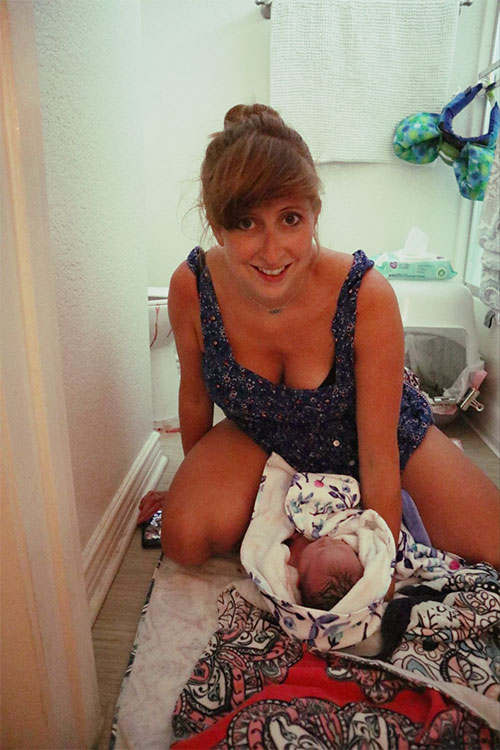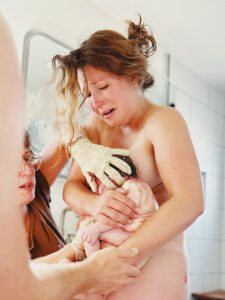Labor and Birth at Home
 One of the best things about homebirth is you never need to leave your home. Instead, we come to you. For some women, it can be difficult to recognize when labor is actually underway. Instead of making trips back and forth to a birth center or hospital, we come and check on you to evaluate your labor. When labor is established, we come to stay with you until your baby is born and until the two of you are stable and on your own.
One of the best things about homebirth is you never need to leave your home. Instead, we come to you. For some women, it can be difficult to recognize when labor is actually underway. Instead of making trips back and forth to a birth center or hospital, we come and check on you to evaluate your labor. When labor is established, we come to stay with you until your baby is born and until the two of you are stable and on your own.
Another advantage of homebirth is that you are the queen of your own castle instead of being a guest in a birth center or hospital. Feeling more in control of your environment reduces stress and enables you to surrender more easily to the power of birth.
Midwife means “with woman”. We stay with you continuously through your labor and birth. Continuity of care increases safety during pregnancy and birth. Compared to hospital staff, with frequent shift changes and impersonal “babysitting” by the electronic fetal monitor, the homebirth midwife knows her client intimately and is closely attuned to her well-being and that of her baby.
When your baby is born, they will go directly into your arms. We do not cut the umbilical cord until after the placenta is born. The baby continues to be oxygenated by the placenta after birth. Any necessary assessments, such as evaluating your baby’s breathing and heart rate, are done with your baby in your arms. The best place for your baby after birth is in your arms next to your heart.
Evidence Supporting Homebirth
 We assist families who choose to birth in the comfort, privacy and safety of their own homes. For healthy mothers attended by a certified midwife, homebirth is proven to be as safe as hospital birth (1,2), more satisfying (3) and less likely to employ unnecessary interventions or end in an unnecessary cesarean section (1).
We assist families who choose to birth in the comfort, privacy and safety of their own homes. For healthy mothers attended by a certified midwife, homebirth is proven to be as safe as hospital birth (1,2), more satisfying (3) and less likely to employ unnecessary interventions or end in an unnecessary cesarean section (1).
Birth at home is gentler for the mother, baby and entire family. In a hospital, unnecessary medical interventions and other insensitive practices can create an unpleasant experience. Research in perinatal psychology proves what we already know intuitively; that “the newborn is a sentient, feeling, remembering, aware being and that the experiences in the womb and at birth have a profound influence on his or her future health and human behavior” (4). How we are born is important!
Homebirth is a safe, satisfying and serene choice for babies, mothers, fathers and siblings.
References
- Johnson, K.,Daviss, B. Outcomes of planned home births with certified professional midwives: large prospective study in North America. British Medical Journal 2005; 330:1416-1423
- Murphy, P., Fullerton, J. Outcomes of intended home births in Nurse-Midwifery practice: A prospective descriptive study. Obstetrics and Gynecology 1998; 92(3):461-470
- Janssen, A., Carty, E., Reime, B. Satisfaction with planned place of birth among midwifery clients in British Columbia. Journal of Midwifery and Women’s Health 2006; 51(2): 91-96
- The Association for Pre- and Perinatal Psychology and Health www.birthpsychology.com

